Ali Hassoun. Crossover

Ali Hassoun, Da Tano da Michelangelo 2, olio su tela, cm 54x70
Dal 9 February 2017 al 8 April 2017
Milano
Luogo: Studio Guastalla
Indirizzo: via Senato 24
Orari: 10-13 / 15-19; chiuso lunedì e festivi
Telefono per informazioni: +39 02 780918
E-Mail info: info@guastalla.com
Sito ufficiale: http://www.guastalla.com
Studio Guastalla presenta con CROSSOVER circa trenta opere recenti di Ali Hassoun, coloratissime tele e acquerelli in cui l’artista italo-libanese approfondisce la ricerca che da ormai vent’anni conduce sul tema del nomadismo, della contaminazione, delle identità multiple, della compresenza e simultaneità di mondi diversi in una stessa realtà. Le diverse anime che si intrecciano in Hassoun, nato a Sidone e approdato vent’anni fa a Milano dopo gli studi e una lunga permanenza in Toscana, tra Firenze e Siena, affascinato dall’Africa dove abitano alcuni dei suoi familiari, si rifrangono e ricompongono nei suoi quadri come in un gioco di specchi, di rimandi. Hassoun attraversa continuamente una frontiera nei suoi dipinti: le sue donne africane, le sue famiglie in fuga, i suoi funamboli si stagliano sullo sfondo di una galleria di dipinti che spaziano da Andy Warhol a Capogrossi, da Picasso a Michelangelo. L’identità di Hassoun si plasma in un continuo spaesamento di tempo e di luogo, di personaggi che si riflettono e osservano e agiscono in mondi non loro, scavalcando i limiti temporali, mescolando e stratificando riferimenti visivi e culturali. Come ha sottolineato Martina Corgnati nel saggio critico di corredo al catalogo della mostra del 2010 al Palazzo Pubblico di Siena (“Alla confluenza dei due mari”), è attraversando la frontiera tra oriente e occidente, ritrovandosi come un pesce fuor d’acqua, che Ali Hassoun si è dovuto interrogare sulla sua identità, osservandola in controluce, come in filigrana, per capirne il nucleo, in cui si intrecciano e stratificano elementi diversi. E’ così che l’identità araba è potuta maturare, portando alla luce non gli elementi più scontati, ideologici, superficiali, ma la struttura profonda. I dipinti di Hassoun sono come racconti per immagini che riprendono le forme narrative della letteratura araba: le storie che rimandano ad altre storie come in un gioco di scatole cinesi; la figura del viandante ( l’Alessandrino dei racconti "Maqamat" di Hamadani), che si travestiva per svelare solo alla fine i suoi stratagemmi narrativi, fingendo di accompagnarsi a poeti in realtà vissuti in epoche passate. Nei dipinti di Hassoun la sua fantasmagorica galleria di immagini tratte dall’arte occidentale si intreccia alle figure di donne africane contemporanee o ai personaggi in continua migrazione che ci introducono, proprio come il viandante dei racconti, in un mondo sfaccettato e polimorfo. Nelle opere più recenti icone travestite da altre icone svelano significati nascosti attraverso sottili ironie, come Van Gogh con il basco di Che Guevara, o una moderna Giuditta con il volto di Amy Whinehouse che taglia la testa di un Oloferne-Cattelan. L’effetto pop di questi intrecci e mescolanze è quello che tutti noi abbiamo sotto gli occhi in qualunque parte di mondo ci veniamo a trovare: insegne di catene di fast-food accanto a monumenti del Rinascimento, pannelli luminosi che si accendono all’improvviso alle porte di città remote e polverose in estremo oriente, folle disordinate che si accalcano, forse alle frontiere che cercano di attraversare, ma forse per partecipare a un evento culturale iperpubblicizzato, finte città italiane ricreate senza crepe nel deserto americano o primitivi che in realtà sono vip trasportati su isole da reality. Nelle ultime opere Hassoun sembra alludere, con un sorriso, a questi continui spaesamenti.
Ali Hassoun è nato a Sidone (Libano) nel 1964. Nel 1982 si trasferisce in Italia per proseguire gli studi all’Accademia di Belle Arti di Firenze. Nel 1992 si laurea in architettura presso l’università della stessa città. Oggi vive e lavora a Milano. Alla nazionalità libanese Hassoun ha aggiunto quella italiana, integrando la dimensione originaria, arabo-mediterranea, della propria identità, con una dimensione diversa, europea ed occidentale.
Il tema più evidente fra quelli che emergono nella sua ricerca pittorica e’ relativo al viaggio, strumento per esplorare esperienze e visioni eterogenee. Invece del concetto di “scontro di civiltà”, semplificazione pericolosa e tuttavia molto diffusa oggi in Occidente, Hassoun propone un’idea di “umanità” come qualità universale e comune fra tutti i popoli, fondata su una spiritualità originaria che precede le diversificazioni religiose e politiche.
Così l’artista si fa interprete di culture diverse ma confrontabili, che convivono nello spazio perfettamente orchestrato delle sue tele coloratissime. I personaggi di un Islam o di un’Africa tanto vissuta quanto favolosa e immaginata, nelle sue composizioni sono tutti catturati in un gioco di citazioni colte e di rimandi indiretti tra figura e sfondo.
Hanno parlato di lui, Elias Shaker, Fayasal Sultan, Omar Calabrese, Mauro Civai, Gianni Giacopelli, Fabrizio Mezzedimi, Letizia Franchina, Luigi Zangheri, Jean Noel Schifanò, Alberto Fiz, Silvia Guastalla, Luca Beatrice, Alessandro Riva, Luca Pietro Vasta, Aldo Mondino, Chiara Guidi, Maurizio Sciaccaluga, Manuela Brevi, Ivan Quaroni, Gabriel Mandel Khan, Marina Mojana, Gianluca Marziani, Beatrice Buscaroli, Antonio d’Avossa, Murteza Fedan, Melih Gorgun, Chiara Canali, Mimmo di Marzio, Saleh Barakat, Gregory Buchakjian, Vittorio Sgarbi e Martina Corgnati.
Tra le personali recenti più significative: nel 2010 Ali Hassoun alla confluenza dei due mari a cura di Martina Corgnati presso il Palazzo Pubblico di Siena; nel 2013 Il POPolo vuole, a cura di Luca Beatrice, presso il Museo Piaggio di Pontedera; nel 2015 il Padiglione del Libano presso Expo Milano.
Inaugurazione: 9 febbraio 2017 ore 18-22 con musica dal vivo del Latin Jazz Quartet
Giovedì 9 marzo alle ore 18
Crossover. Arte e Cultura tra identità multiple e società liquida.
Un dibattito culturale al quale interverranno:
ALI HASSOUN, artista
MARYAN ISMAIL, antropologa
VITTORIO ROBIATI BENDAUD, coordinatore del Tribunale rabbinico centro-nord Italia
SHADY HAMADI, giornalista e scrittore
CAMILLE EID, giornalista, fondatore Associazione Culturale Araba Fenice
ESSIA IMJED, blogger
coordina:
ILARIA GUIDANTONI, giornalista
SCARICA IL COMUNICATO IN PDF
COMMENTI

-
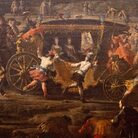 Dal 20 December 2025 al 20 April 2026
Caserta | Reggia di Caserta
Dal 20 December 2025 al 20 April 2026
Caserta | Reggia di Caserta
Regine: trame di cultura e diplomazia tra Napoli e l’Europa
-
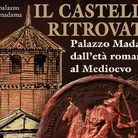 Dal 19 December 2025 al 23 March 2026
Torino | Palazzo Madama - Museo Civico d’Arte Antica
Dal 19 December 2025 al 23 March 2026
Torino | Palazzo Madama - Museo Civico d’Arte Antica
Il castello ritrovato. Palazzo Madama dall’età romana al medioevo
-
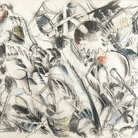 Dal 17 December 2025 al 19 January 2026
Roma | Palazzo della Cancelleria
Dal 17 December 2025 al 19 January 2026
Roma | Palazzo della Cancelleria
De Humana Mensura di Linda Karshan
-
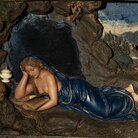 Dal 18 December 2025 al 12 April 2026
Firenze | Gallerie degli Uffizi
Dal 18 December 2025 al 12 April 2026
Firenze | Gallerie degli Uffizi
Cera una volta. Sculture dalle collezioni medicee
-
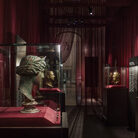 Dal 11 December 2025 al 9 April 2026
Firenze | Museo Archeologico Nazionale di Firenze
Dal 11 December 2025 al 9 April 2026
Firenze | Museo Archeologico Nazionale di Firenze
Icone di Potere e Bellezza
-
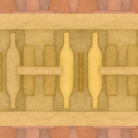 Dal 11 December 2025 al 11 January 2026
Roma | Palazzo Esposizioni Roma
Dal 11 December 2025 al 11 January 2026
Roma | Palazzo Esposizioni Roma
Giorgio Morandi nella Collezione Eni. Un viaggio attraverso la storia culturale del cane a sei zampe e l’eredità di Enrico Mattei


